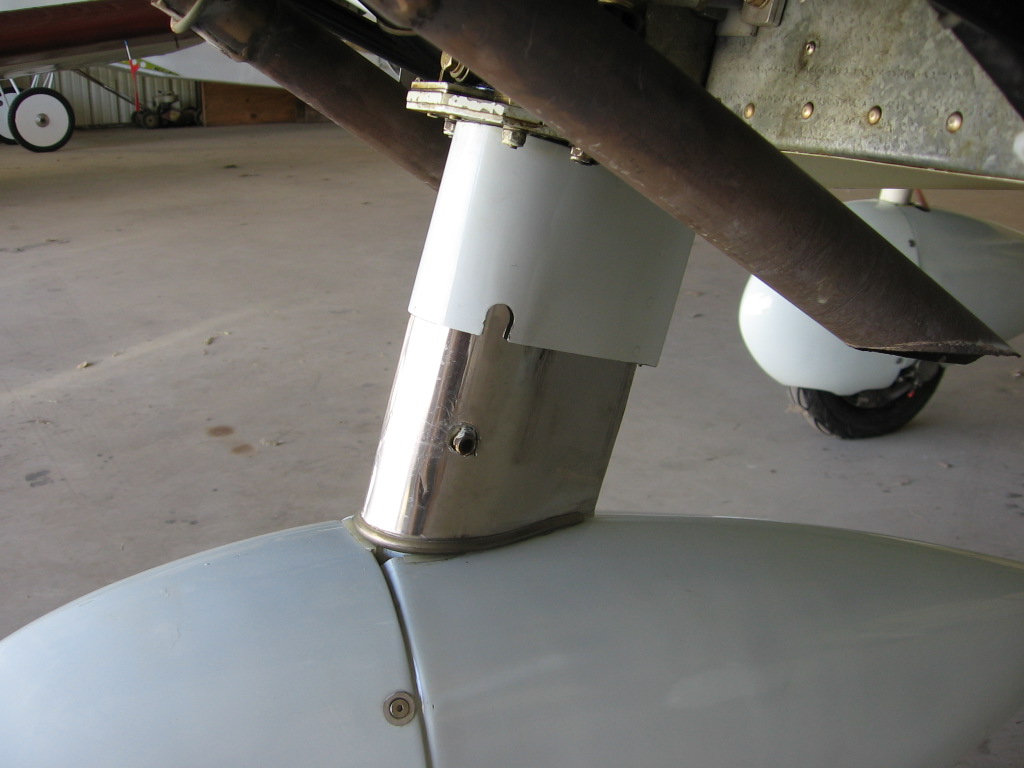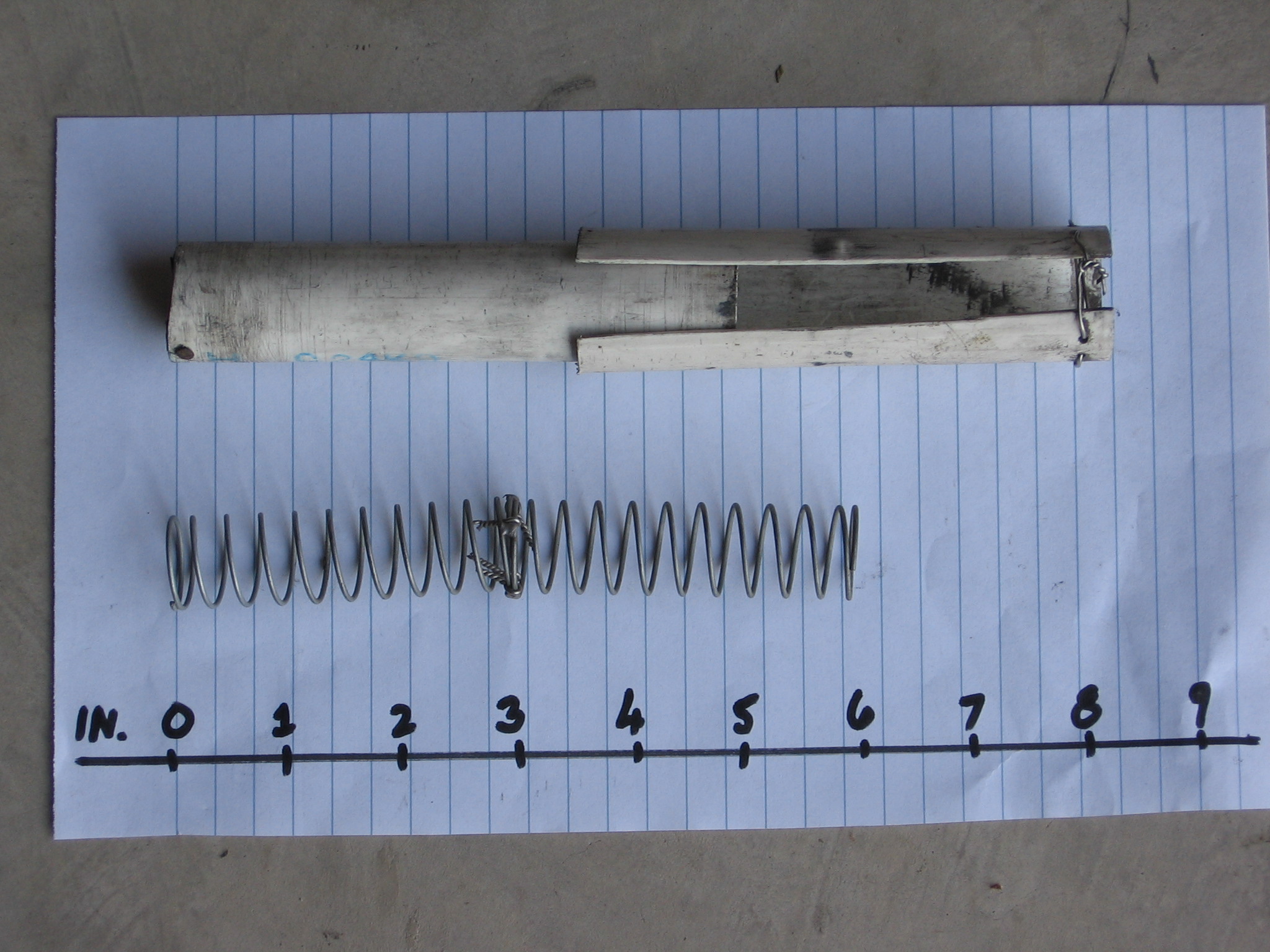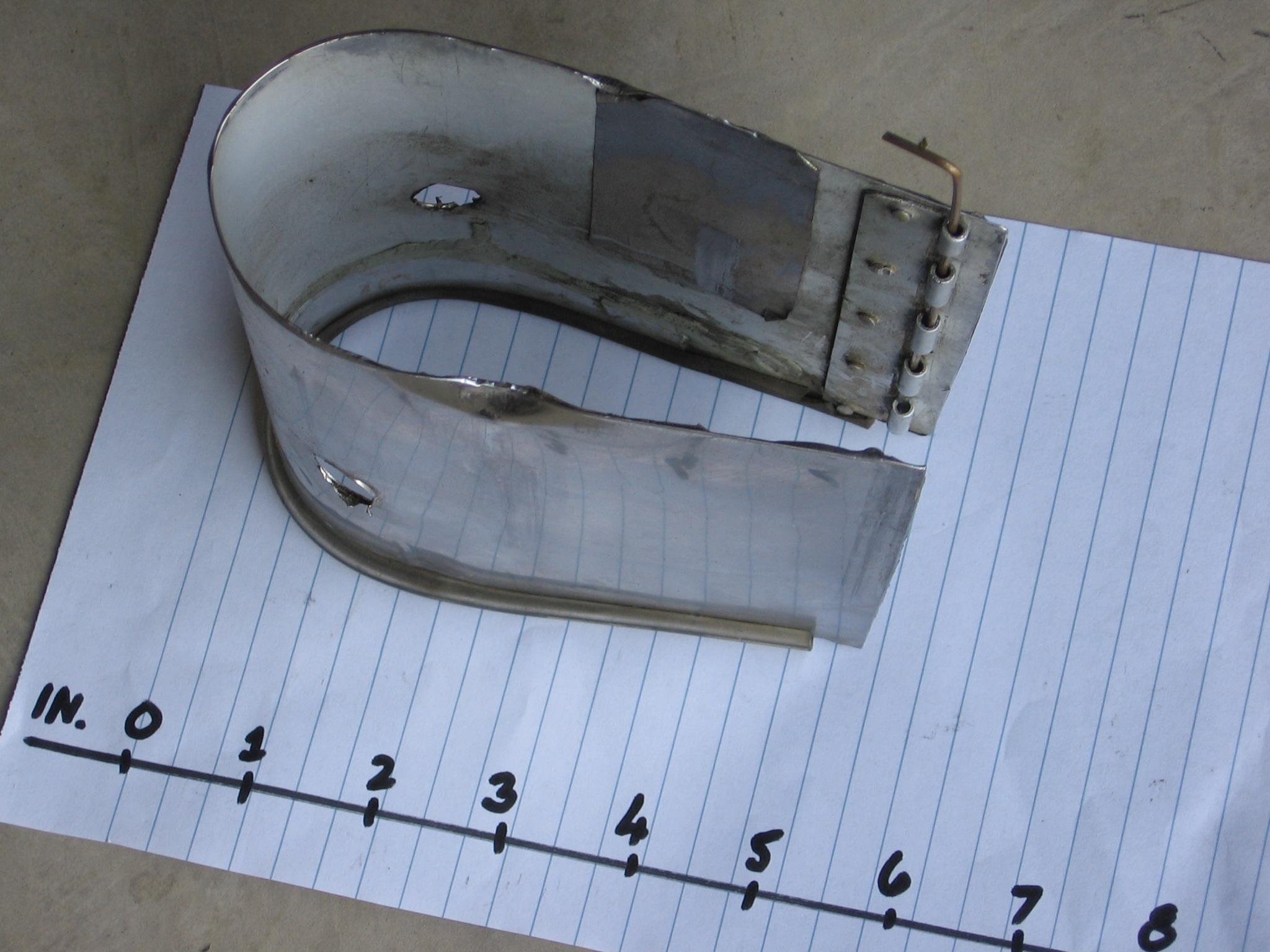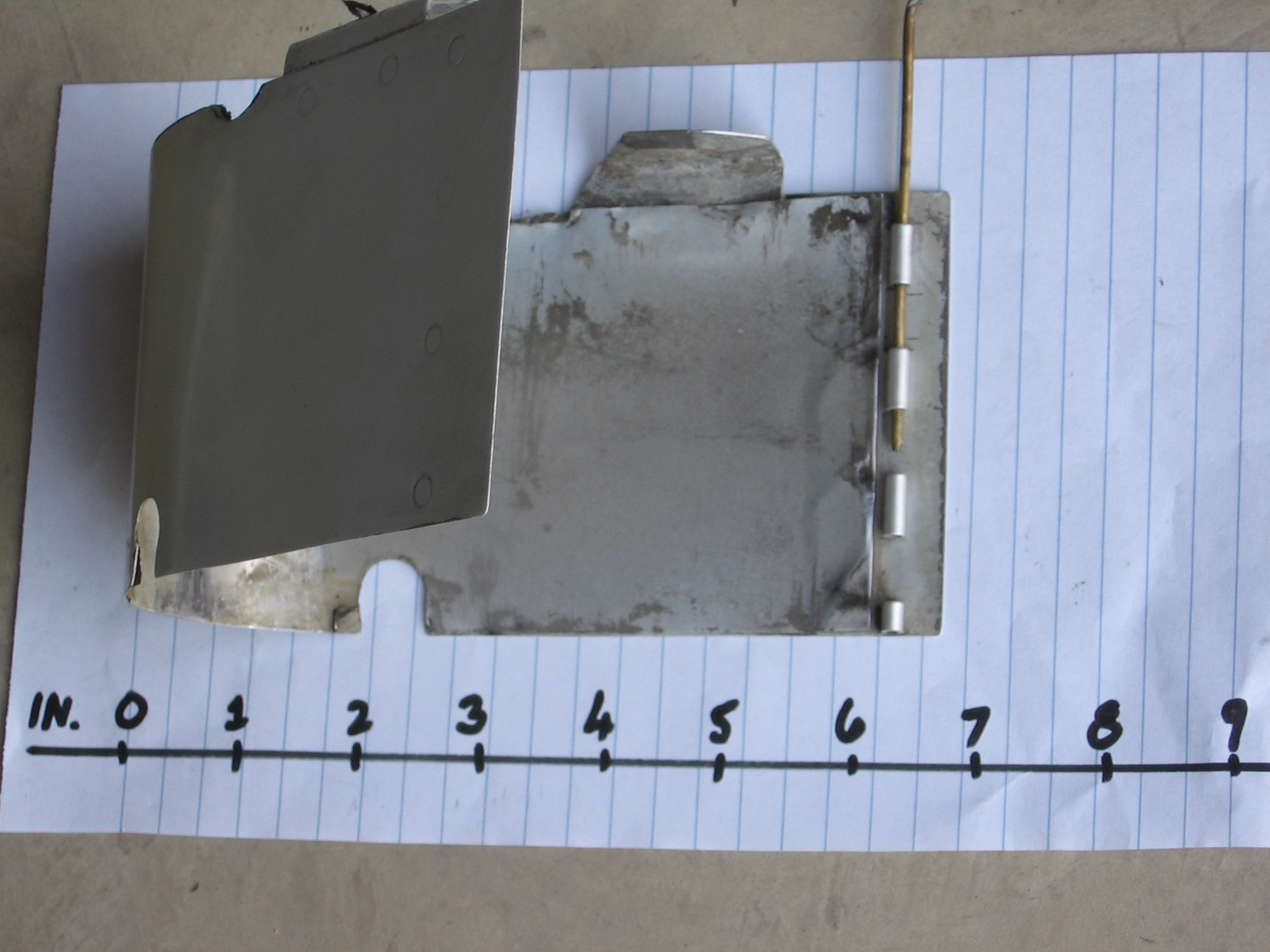Design Improvements for the Zenith 601 HDS:
Fairing of Nose Gear
Fairing of Nose Gear
Any round tube exposed to the slipstream produces an amazing amount
of drag. Thus, fairing the relatively long nose gear tube seems
a good idea. Also, if the nose gear tube has no fairing, then it becomes
covered with dust and grit, and the substantial up-and-down
movement of the nose gear during taxiing, takeoff, and landing
grinds down the Delrin bearing.
The fairing consists of two fitted pieces. Each is held together
at the rear lip by a vertical wire inserted into a piano hinge.
A spring loaded tube pushes
the upper fairing against the nose gear bearing. The lower piece is
held in place by a small tube welded into the nose gear. That tube
is used by a lightweight tow bar that inserts a long AN3 bolt into the
tube. The shiny surface is stainless steel tape
on top of the aluminum of the lower fairing part.
The same tape is used inside
the upper fairing part, so there is no wear. Once a year the
fairing is removed, and the nose gear tube is cleaned and lightly
coated with grease. This has essentially stopped the wear of the
Delrin bearing of the nose gear.
Optimal fairing would require that the width of the fairing is
three times the diameter of the nose gear tube. This is not possible here
since the turning of the nose gear and the channel bracket holding
the lower nose gear bearing limit the width.
An alternate tow bar attachment is a follows.
One drills a 3/16 hole into the nose gear tube, inserts an
AN3 bolt with two spacers on the two sides, and keeps the bolt in place
with a nylon stop nut. Sealant is used to prevent moisture from
entering the gear tube. The tow bar is clamped to the spacers.

Here are details of the fairing. First a picture of the two nested
tubes and the spring. The tubes are made from thin-wall PVC tubing.
To get proper nesting, the outer tube was cut and widened in hot water.
Each tube has a stop at the end.
The spring is inserted into the tubes and thus pushes them apart.
We could not get a soft spring of correct size and made it from two springs.

The next picture shows the lower part of the fairing.
The sharp bottom lip is covered by spliced nylon tubing so that it
does not damage the nose wheel fairing. The lower
piece is held in place by the tow bar tube of the nose gear.
The wire holds the
back part of the piece together via a piano hinge.

Finally, the upper piece. It has two tabs that overlap when the fairing
is held together with the wire. The spring-loaded telescopic
tube pushes against those tabs to keep the upper
piece snug against the bearing of the nose gear.
The fairing was designed after we had added the tube for the
tow bar. When planned at the same time, the tow bar attachment
should be low enough on the nose gear tube so that the two cutouts shown
in the picture are not needed.
